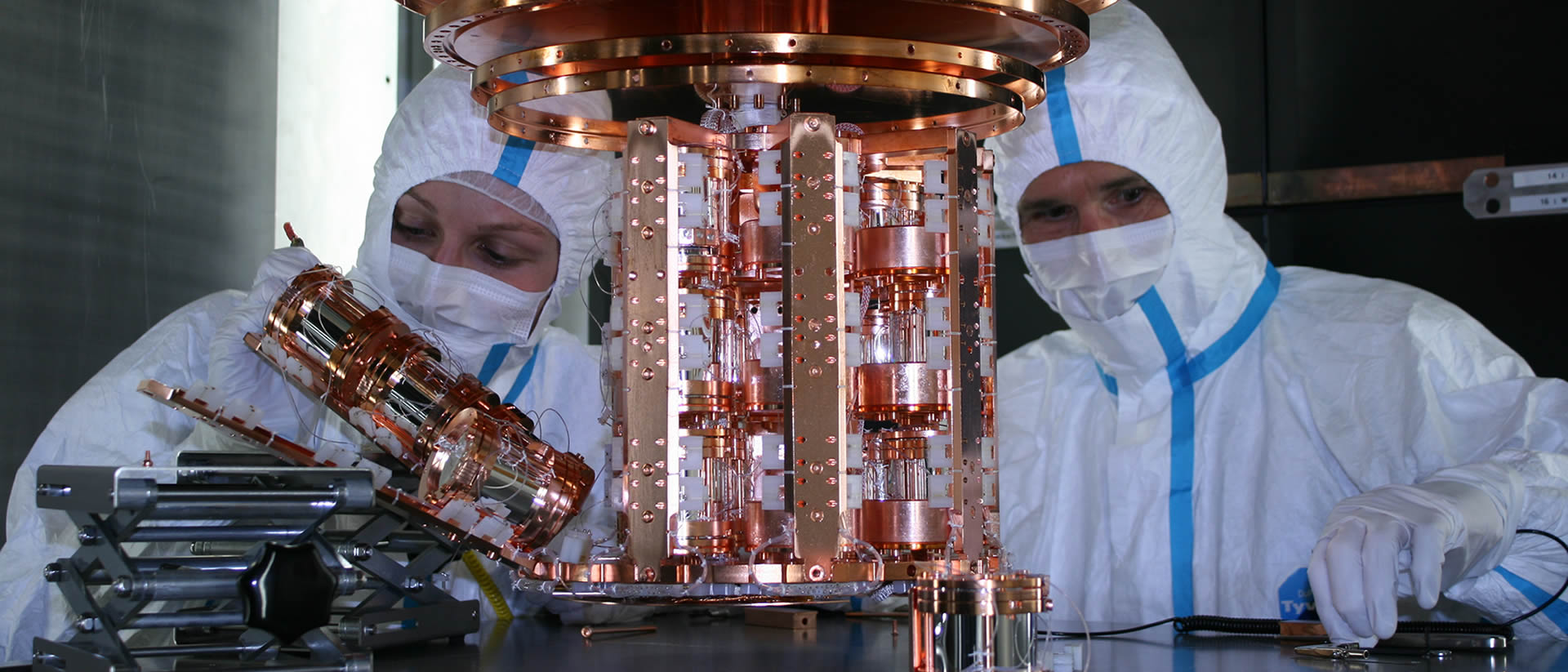
Tracking dark matter
The current physicists expect that dark matter will turn out as an electrically neutral and, in comparison to the familiar particles, relatively heavy particle. The particles are bound to galaxies only interacting with other matter via gravitation and undisturbed by the electromagnetic force. They are present everywhere and also pass through the earth in high numbers without being noticed.
One attempt to find a final solution of the dark matter problem is made beneath the Italian mountain Gran Sasso. In a cave, scientists have built a laboratory shielded from cosmic and atmospheric radiation. Here the so called CRESST experiment is located.
“With our detectors, we try to directly measure dark matter particles”, Dr. Achim Gütlein from the institute of high-energy physics of the Austrian Academy of Sciences explains, who is a member of the international CRESST collaboration. CRESST is an acronym for “Cryogenic Rare Event Search With Superconducting Thermometers” and thus is not only the name but also a short description of the experiment. “The whole experiment can be equipped with up to 36 detector modules which can be separately read out. These are made of CaWO4 crystals with a mass of up to 300 g each. When a dark matter particle hits an atomic core inside our crystals, a vibration in the lattice — in other words heat — is produced. This heat is measured with highly sensitive superconducting thermometers.”
In addition to the heat, light is produced in such an event. Achim Gütlein declares: “In case other cosmic radiation or natural radioactivity enters our experimental setup, it may also lead to a nuclear recoil and produce heat. We can only distinguish between these events and the ones induced by dark matter particles by looking at the relative amount of the heat and light signals.” Of course, the heat produced by a single particle hitting a nucleus is very small. Because of this, one has to take care to reduce all lattice vibrations disturbing the measurement. This is done by cooling the experiment to a temperature below 20 mK — only 0.02 degree above absolute zero (which is at minus 273.15° Celsius).
It is a natural property of dark matter to interact very little with other matter. Of course, this complicates the desired detection, because the events will be very rare. Achim Gütlein says: ”Up to now, we have not discovered dark matter particles. But our detector is so sensitive that it would be enough evidence if only ten dark matter events would induce a signal in our detector per year.” It is a very familiar rule in natural science that even measuring no signal can be an interesting result. This way, theories can be tested and discarded and the parameter space for dark matter is further limited. “We still have the hope to achieve a direct measurement of dark matter after further increasing the sensitivity of our detectors”, says Achim Gütlein.
And so CRESST and all the other experiments in the world will continue their quest on finding the elusive dark matter. But so far, the secret of dark matter remains one of the biggest mysteries of modern physics.












